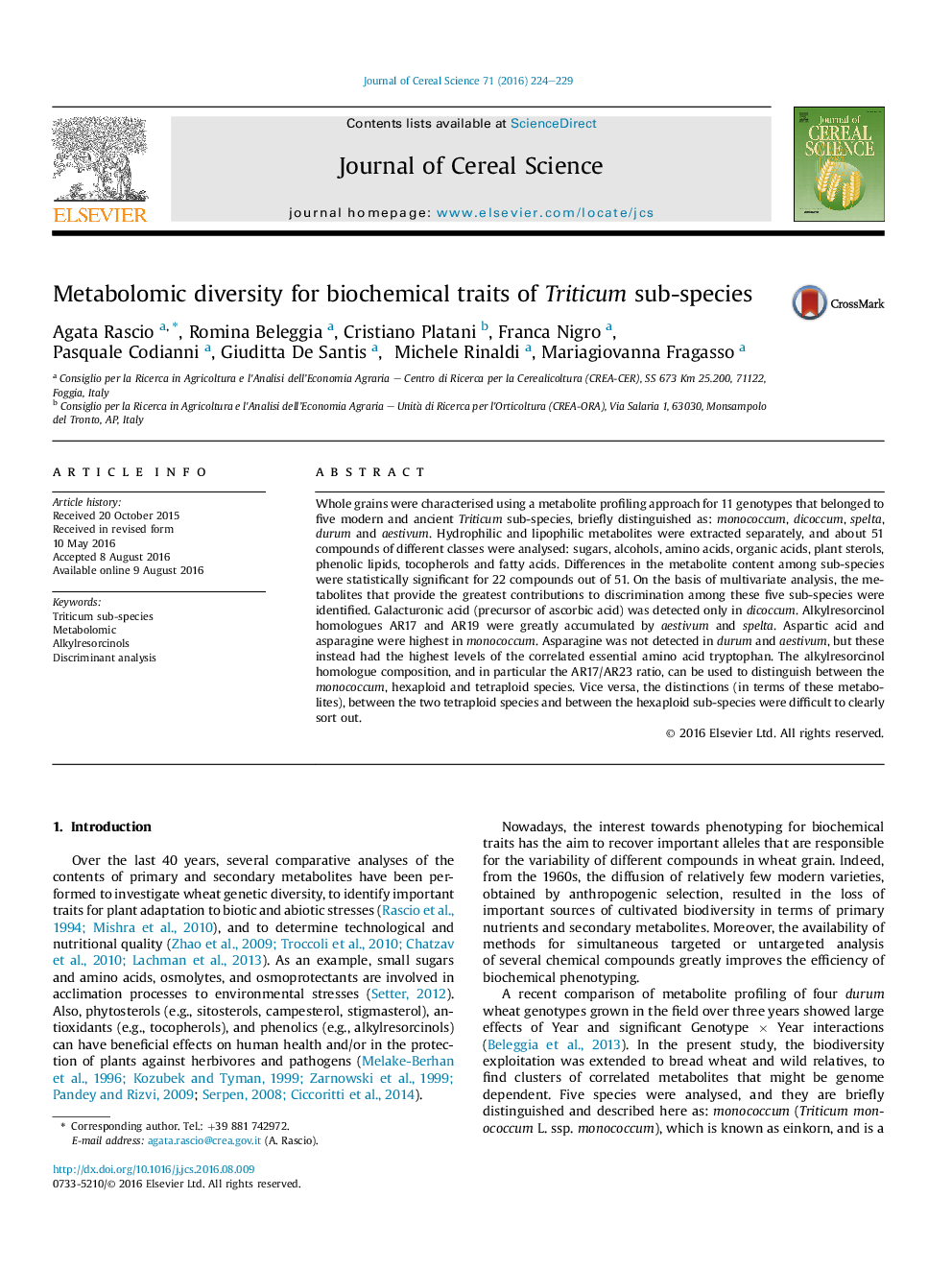| Article ID | Journal | Published Year | Pages | File Type |
|---|---|---|---|---|
| 4515543 | Journal of Cereal Science | 2016 | 6 Pages |
•Metabolite profiling of Triticum whole grain was performed for 11 genotypes.•Twenty-two of 51 compounds showed significant genotypic diversity.•Metabolites with significant discrimination among the five species were identified.•Alkylresorcinol 17/23 ratio distinguishes among monococcum, hexaploids, tetraploids.
Whole grains were characterised using a metabolite profiling approach for 11 genotypes that belonged to five modern and ancient Triticum sub-species, briefly distinguished as: monococcum, dicoccum, spelta, durum and aestivum. Hydrophilic and lipophilic metabolites were extracted separately, and about 51 compounds of different classes were analysed: sugars, alcohols, amino acids, organic acids, plant sterols, phenolic lipids, tocopherols and fatty acids. Differences in the metabolite content among sub-species were statistically significant for 22 compounds out of 51. On the basis of multivariate analysis, the metabolites that provide the greatest contributions to discrimination among these five sub-species were identified. Galacturonic acid (precursor of ascorbic acid) was detected only in dicoccum. Alkylresorcinol homologues AR17 and AR19 were greatly accumulated by aestivum and spelta. Aspartic acid and asparagine were highest in monococcum. Asparagine was not detected in durum and aestivum, but these instead had the highest levels of the correlated essential amino acid tryptophan. The alkylresorcinol homologue composition, and in particular the AR17/AR23 ratio, can be used to distinguish between the monococcum, hexaploid and tetraploid species. Vice versa, the distinctions (in terms of these metabolites), between the two tetraploid species and between the hexaploid sub-species were difficult to clearly sort out.
